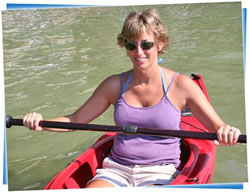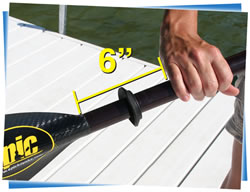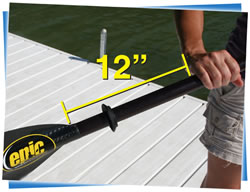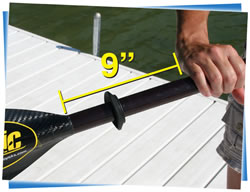Paddle Sizing Guide
Choosing an adjustable paddle, offering various angles and lengths for both right and left-hand control, is recommended for novice paddlers seeking personalized comfort and performance.
External Links
As experienced paddlers ourselves, we understand the importance of selecting the right paddle for your kayaking adventures. Explore a blend of traditional wisdom and innovative techniques to discover valuable insights tailored to your needs.
Aqua Bound Kayak paddle fit guide
Having a correctly sized kayak paddle can make all the difference while on the water.
As you would with any paddle sport, you want to choose a stand-up paddle that’s the right length for you. This will make your paddling experiences easier, more efficient and more enjoyable.
A great guide on how to find the right greenland paddle for your water adventures.
Frequently Asked Questions
1Do I need to have any experience?
We all have to start somewhere so of course not.
Youtube, forums, and online are great ways to get started before you hop on the water but we recommend finding others to go with at first until you feel comfortable on the water.
2What do I need to get started?
To get started we recommend having a boat of course but also a PFD (Lifejacket), and a paddle.
Some other things to consider are dry bags/boxes, water shoes (not flipflops), spare clothes, dry wear, sunhats, sponge, bilge pump, and more.
Take a look on our website to see what we carry!
3Do I need to wear my lifejacket?
We highly recommend it; in a study done by the coast guard it was found that 87% of people who drowned were NOT wearing lifejackets.
So be safe and wear your lifejackets. If you don't have one, we carry a wide variety in store and here online!
In some states you legally have to wear a PFD on the water. In Indiana you must wear it if you are in a sit-on-top but if not, it must be somewhere on the boat. Check your local and state regulations.
4What about the weather?
Only go out if you feel comfortable DO NOT go out if you feel worried or anxious about the weather.
We do not reccommend going out in conditions that have high wind speeds or in thunderstorms.
If you do go out in moderate to severe weather make sure to dress for the occasion whether its boatloads of sunscreen or water proof jackets with sprayskirts.
5How much can a kayak cost?
Your typical recreational boat can vary but are roughly in the low thousands range.
We do offer a large selection of boats the lowest starting around a few hundred dollars and our most expensive running a few thousand.
6Can I bring my furry friend?
Of course! We carry boats specifically designed to fit dogs.
Keep in mind your dogs temperament, comfort, and energy levels if you wish to take them out.
Also be mindful though that your furry friends will need their own lifejackets when on the water to stay safe.
7Do inflatable kayaks exist?
They in fact do! We currently only carry a few inflatable kayaks single person and tandem styles.
There are a lot of different options out there for inflatable boats and they can be stored a lot easier in smaller spaces than your standard kayak as well.
8Are kayaks heavy?
Depending on your material, boat length, and paddling preferences it can vary.
The most common boats you see on the water are a polyethene rotomolded which are basically thick, heavy-duty plastic and often weighing around 45-65 lbs.
We do offer ABS boats which are an acrylic material made to weigh less than your typical boat that can be roughly 25-40 lbs almost halving the weight! We also carry composite boats that weigh around what the ABS boats do just a different hybrid of materials.
9Do we rent?
We do not rent (Google says we do but dont be fooled!), but we sell a wide variety of boats for you to get your best fit and avoid any hassle with renting!
Look here on our website at a large selection then come on down to check us out!
Have more questions?
Our team of experts is ready and waiting to help you out. Reach out to us now!




